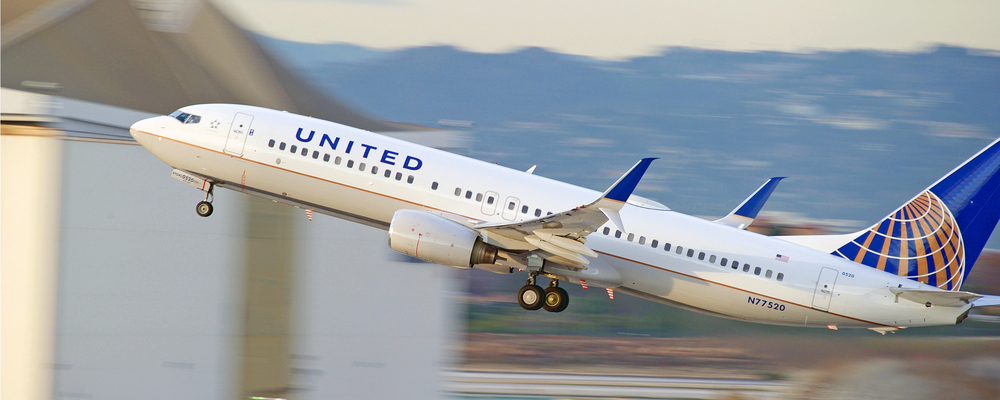What demand planning lessons can we learn from the recent United Airlines Overbooking Issue?

The million-dollar question: “My forecasts will always be wrong. Should I over-forecast or under-forecast?”
For most service or manufacturing businesses, answering this question is often needed at one point or the other. If you over-forecast, you can have excess inventory costs, and you may end up having to employ a combination of sales and inventory strategies to get rid of excess inventory. On the other hand, if you under-forecast, then you could end up with customers who might not be able to access a service or product when they want it.
Industries that have fixed capacities such as airlines or hotels, on the other hand, tend to have a unique forecasting issue. These types of businesses sometimes have to over-forecast or overbook to make room for cancellations.
What about Forecasting in The Airline Industry?
While most people might be in dismay over the treatment of the man that was forced to leave the United Airlines flight, over-booking flights is a pretty standard airline practice. Airlines often ‘over-forecast’ taking into account the possibility of cancellations and people missing their flights to maximize profits and avoid having to fly an aircraft that’s not filled. It costs an airline the same to operate an aircraft that is filled or half empty. Therefore, to minimize costs and maximize profitability, it’s always better for the airlines to fly a full aircraft. Of course, a problem arises when the forecasted margin of error; in this case, the number of people who might cancel or miss their flights, does not follow statistical or historical events. The recent case with United Airlines is a clear example; the flight was clearly overbooked to the point that aircraft personnel didn’t have a place to sit. In this case, the number of forecasted cancellations were overshot leading to the unpleasant encounter.
Many airline consumers are calling for airlines to abolish over-booking flights given the recent set of events. It, however, seems very unlikely that this would be implemented. The Ted Talk video on this below explains why in greater detail.
Demand planning lessons from the recent United Airlines overbooking issue
Always have a solid contingency plan.
For most businesses relying on forecasted demand numbers, there should always be a contingency plan in place for situations when things go wrong. To do this, companies have to create different what-if scenarios and be ready in case they experience any of those scenarios. For example, for a 100-seated aircraft, with an average flight cancellation rate of 10%, there is the need to analyze different what-if scenarios that use different cancellation rates and prepare for those situations. The United Airlines situation experienced fewer cancellations than expected. An example of a contingency plan for a situation like that could include partnering with other airlines that have flights leaving around the same time to accommodate customers who might be bumped off the flight. Additionally, airlines could also factor in the number of voluntary flight bumps that they get per flight. Hence reducing the need for involuntary flight bumps in situations when flights are overbooked.
Look to reduce forecast error to a safer margin error of (+/-5%).
All forecasts are wrong. The goal of improving forecast accuracy is to improve the margin of error, therefore, reducing situations where businesses would either incur too many costs for over forecasting or have stock-outs as result of under-forecasting. Businesses should seek to be in the (+/- 5%) range when possible. This range allows for minimum impact and fewer business disruptions.
The business impact of poor customer satisfaction is amplified in a digital era.
Businesses operating in today’s digital era should be aware of the impact of a disgruntled customer. The business impact of this negative experience was made visible to most of the world through various social media channels. This exposure resulted in customers calling for a boycott of United Airlines. In fact, United Airlines’ market capitalization dropped by more than $250 million as a direct aftermath.
Although the United Airlines case, is probably unusual for most businesses, having unhappy customers could impact bottom line results not in just the near term, but also in the long term. A more typical example of how a poor customer experience could affect a business is with a customer writing a negative review online. The negative review stays online forever, even after fixing the issue. Essentially, providing high service levels to your customers is invaluable and should be part of your integrated business plan.
When planning against uncertainty nothing is certain
Finally, when planning against uncertainty, nothing is certain. And because of this, businesses must be nimble and ready to respond to market changes. A time lag or the ‘wrong’ response could be detrimental to a business – and we can all agree that’s needless to say in this situation.
Enjoyed this post? Subscribe or follow Arkieva on Linkedin, Twitter, and Facebook for blog updates





